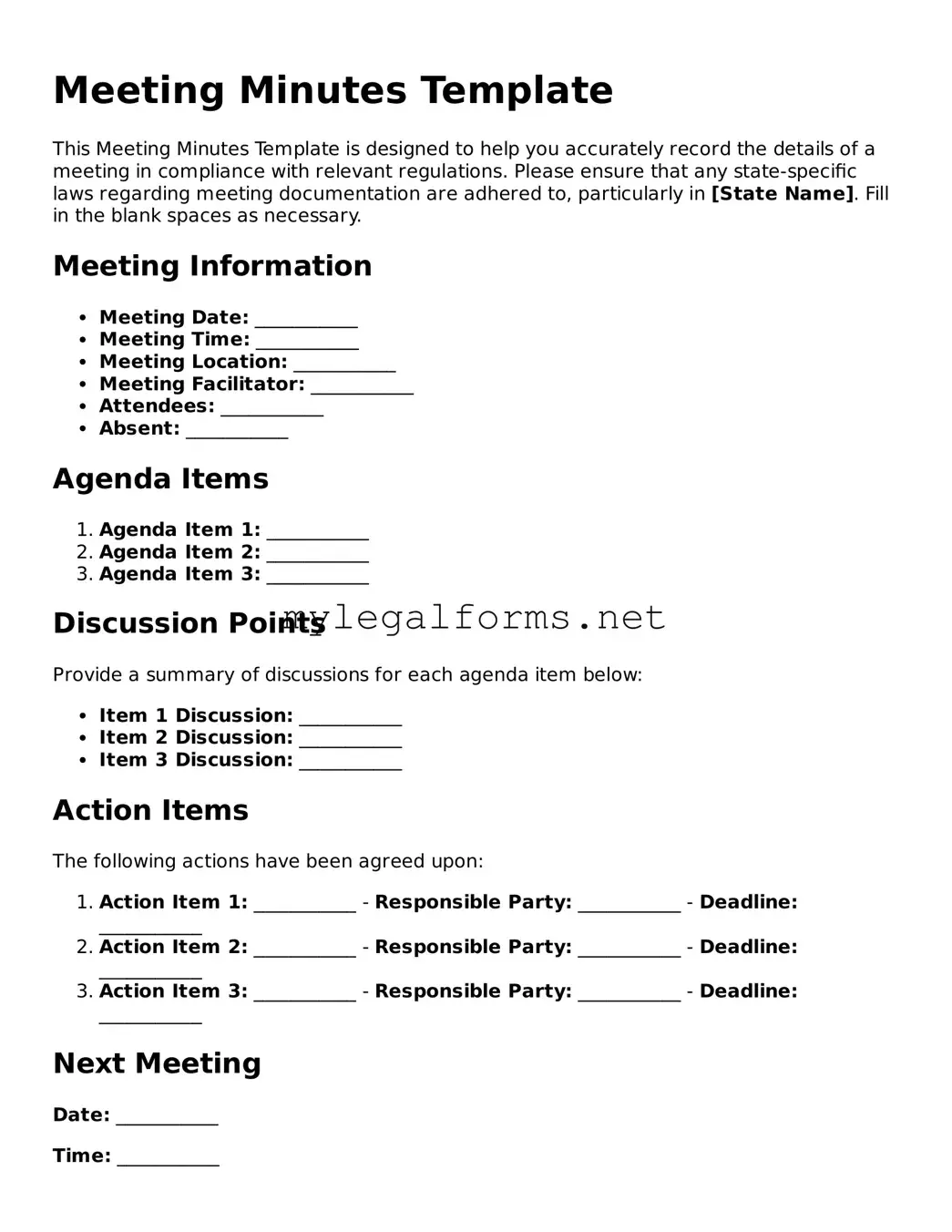Filling out the Meeting Minutes form can seem straightforward, but many people make common mistakes that can lead to confusion or miscommunication. One frequent error is failing to include the date and time of the meeting. This information is crucial for record-keeping and helps attendees recall the context of discussions.
Another mistake is neglecting to list the attendees. Omitting names can create uncertainty about who participated in the meeting. It's essential to document everyone present to provide a clear record of contributions and decisions made.
Some individuals also forget to specify the meeting's purpose. Without a clear agenda, the minutes may lack focus. A well-defined purpose helps frame the discussions and decisions that follow.
Inaccurate or vague summaries of discussions can lead to misunderstandings. It is important to capture key points accurately. Avoid generalizations; instead, provide specific details that reflect the conversation and decisions made.
Additionally, failing to note action items is a common oversight. Each decision should include who is responsible for follow-up tasks and any deadlines. This accountability is vital for ensuring that agreed-upon actions are completed.
Another error is not including the next meeting date. This information helps attendees plan for future discussions and ensures continuity in communication. Omitting it can lead to scheduling conflicts or missed opportunities for collaboration.
Some people also overlook the need for a clear structure in the minutes. A well-organized format enhances readability and ensures that important information is easy to find. Use bullet points or headings to categorize discussions and decisions.
Errors in spelling and grammar can undermine the professionalism of the minutes. Carefully proofread the document before finalizing it. Clear and correct language reflects the seriousness of the meeting and its outcomes.
Finally, failing to distribute the minutes in a timely manner can render them ineffective. Share the completed minutes with attendees as soon as possible. This ensures that everyone is on the same page and can act on the decisions made during the meeting.
